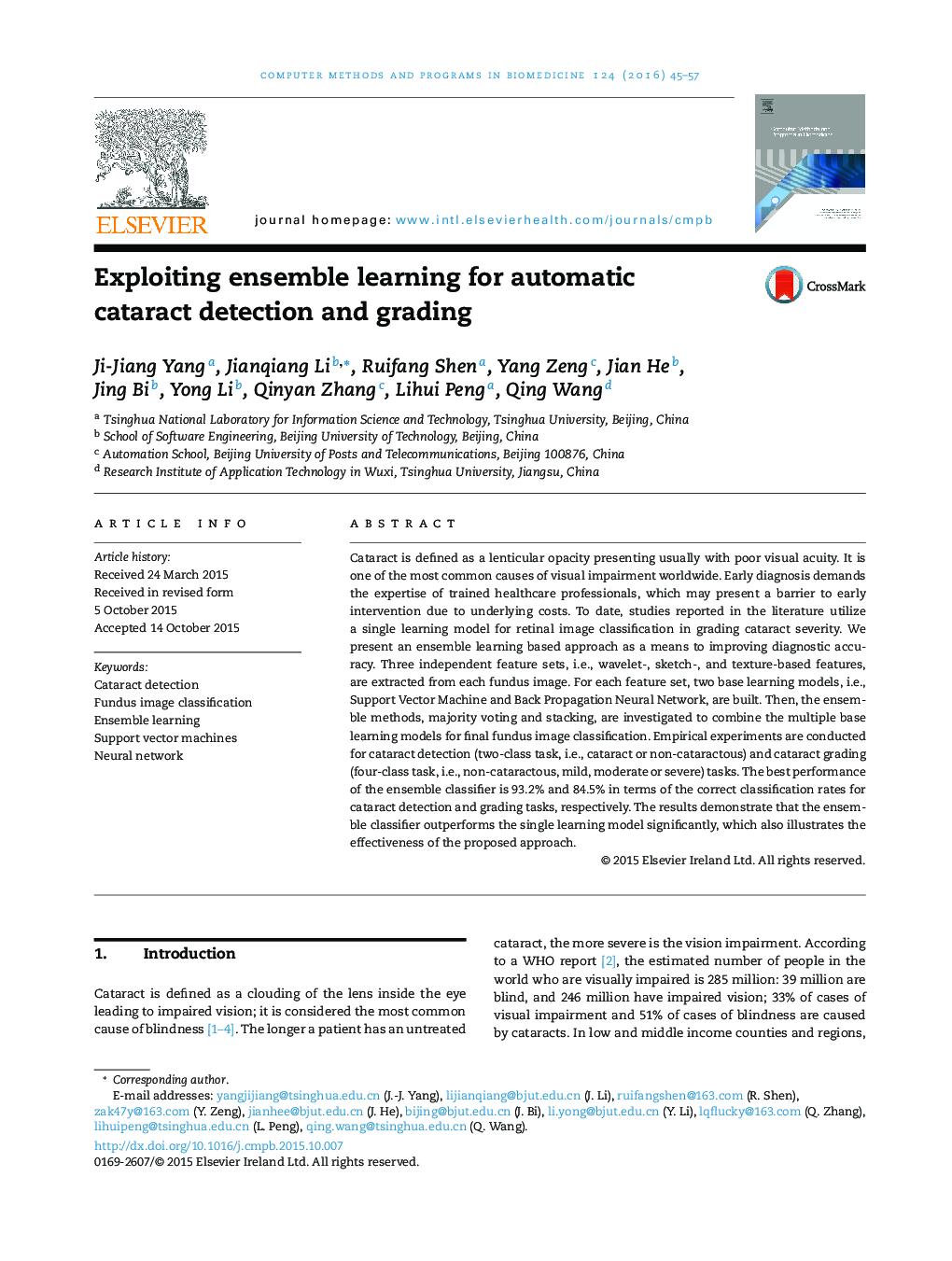| کد مقاله | کد نشریه | سال انتشار | مقاله انگلیسی | نسخه تمام متن |
|---|---|---|---|---|
| 469157 | 698293 | 2016 | 13 صفحه PDF | دانلود رایگان |
• Fundus image analysis provides great potentials for automatic cataract diagnosis.
• Ensemble learning is exploited for combining multiple models to improve the performance.
• Three independent feature sets, i.e., wavelet, sketch, and texture based features, are utilized.
• Two base learning models, i.e., Support Vector Machine and Back Propagation Neural Network, are investigated in the ensemble approach.
• The experiments demonstrate that our approach outperforms single model significantly.
Cataract is defined as a lenticular opacity presenting usually with poor visual acuity. It is one of the most common causes of visual impairment worldwide. Early diagnosis demands the expertise of trained healthcare professionals, which may present a barrier to early intervention due to underlying costs. To date, studies reported in the literature utilize a single learning model for retinal image classification in grading cataract severity. We present an ensemble learning based approach as a means to improving diagnostic accuracy. Three independent feature sets, i.e., wavelet-, sketch-, and texture-based features, are extracted from each fundus image. For each feature set, two base learning models, i.e., Support Vector Machine and Back Propagation Neural Network, are built. Then, the ensemble methods, majority voting and stacking, are investigated to combine the multiple base learning models for final fundus image classification. Empirical experiments are conducted for cataract detection (two-class task, i.e., cataract or non-cataractous) and cataract grading (four-class task, i.e., non-cataractous, mild, moderate or severe) tasks. The best performance of the ensemble classifier is 93.2% and 84.5% in terms of the correct classification rates for cataract detection and grading tasks, respectively. The results demonstrate that the ensemble classifier outperforms the single learning model significantly, which also illustrates the effectiveness of the proposed approach.
Journal: Computer Methods and Programs in Biomedicine - Volume 124, February 2016, Pages 45–57
